Abstract
An approach is described for the estimation of the number of rare variants in the population from the number in a sample drawn at random from the population. This quantity is used to derive an estimate of the mutation rate. The data required are the number of rare variants in the sample and the distribution of offspring within a population of well-defined size with little or no immigration. Application of this approach to data on 28 loci assayed in the Yanamamo, a tribe of South American Indians, yields an average mutation rate of 0.1 ∼ 0.2 × 10-5. Determination of this figure is subject to several assumptions concerning the nature of the rare variants and the structure of the population. Violation of these assumptions will generally result in the underestimate of the true mutation rate.
Keywords: population genetics, Amerindian tribes, population structure
Full text
PDF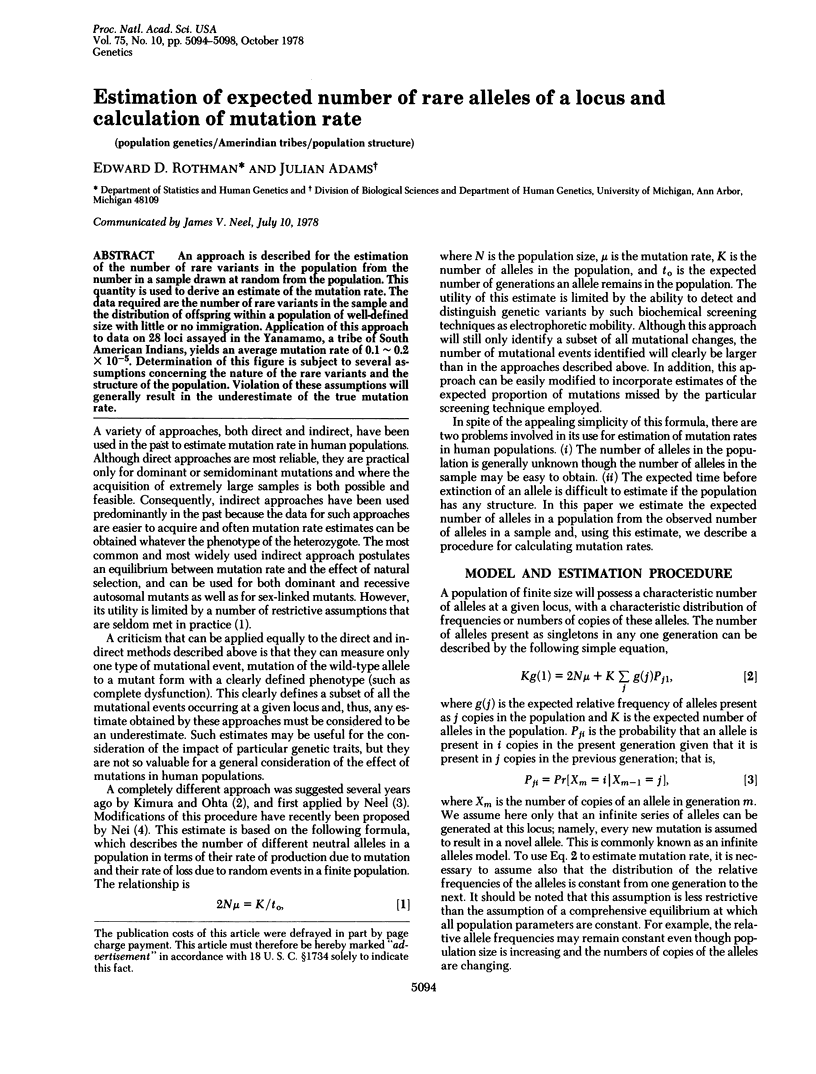
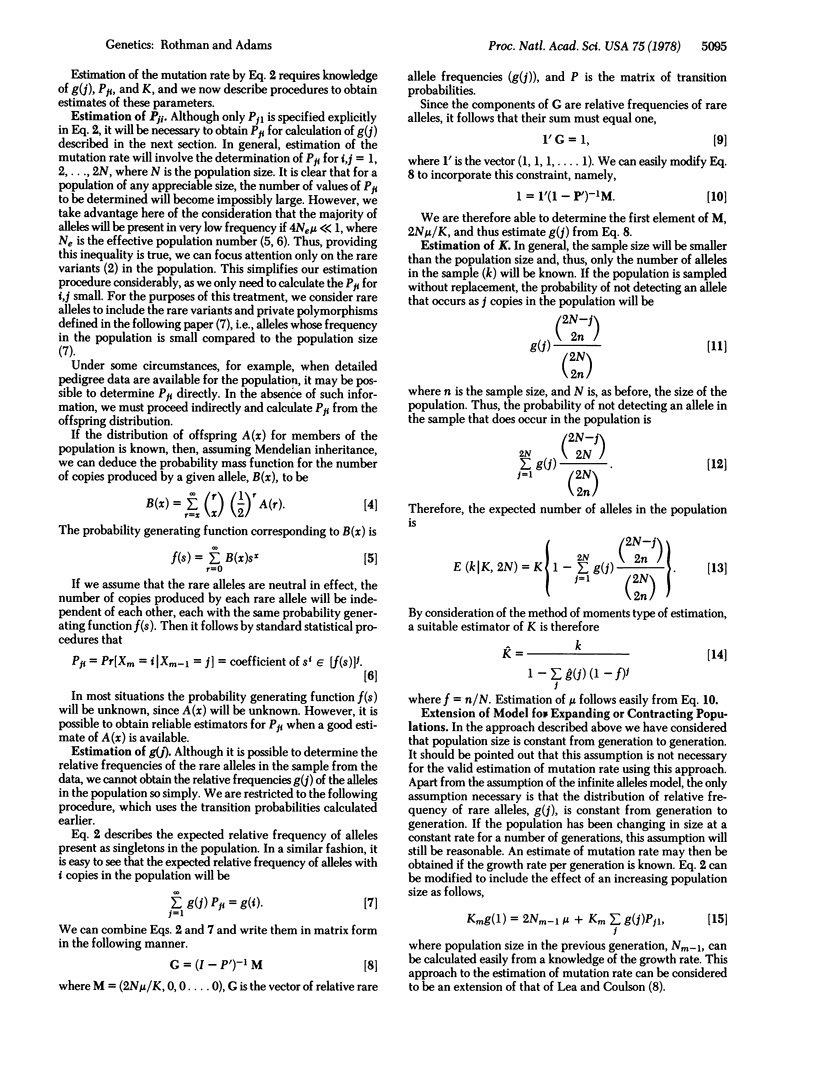
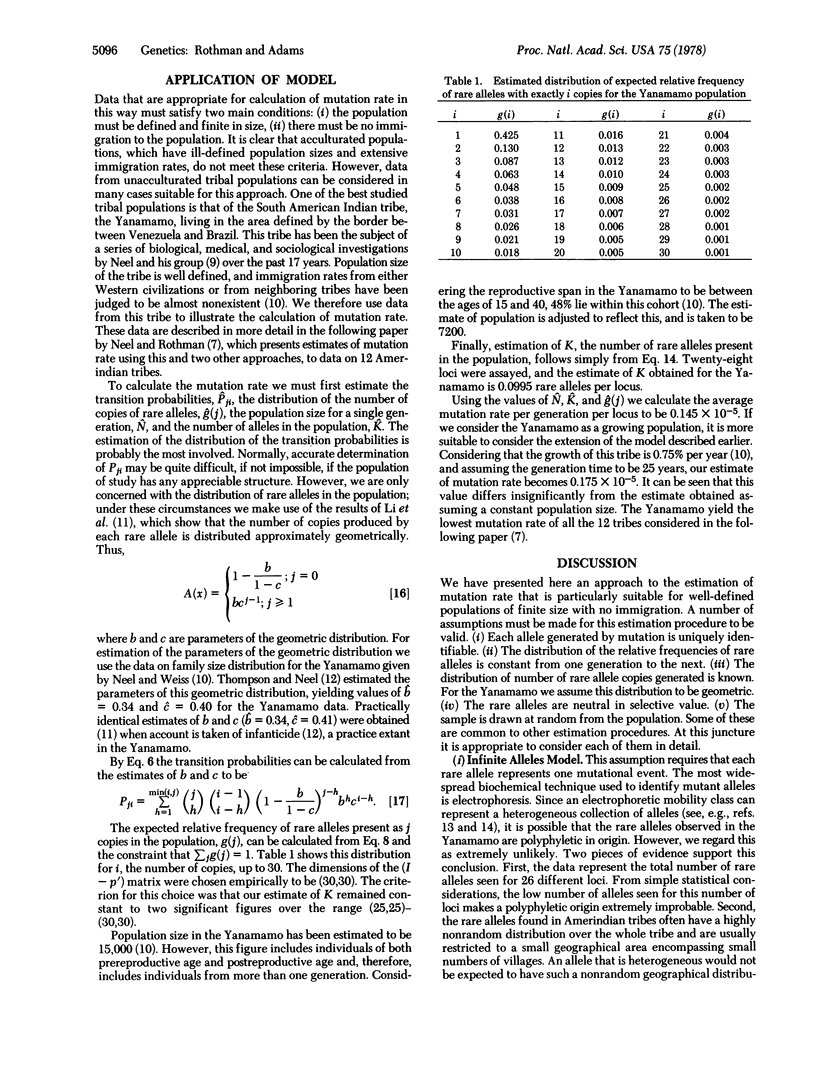
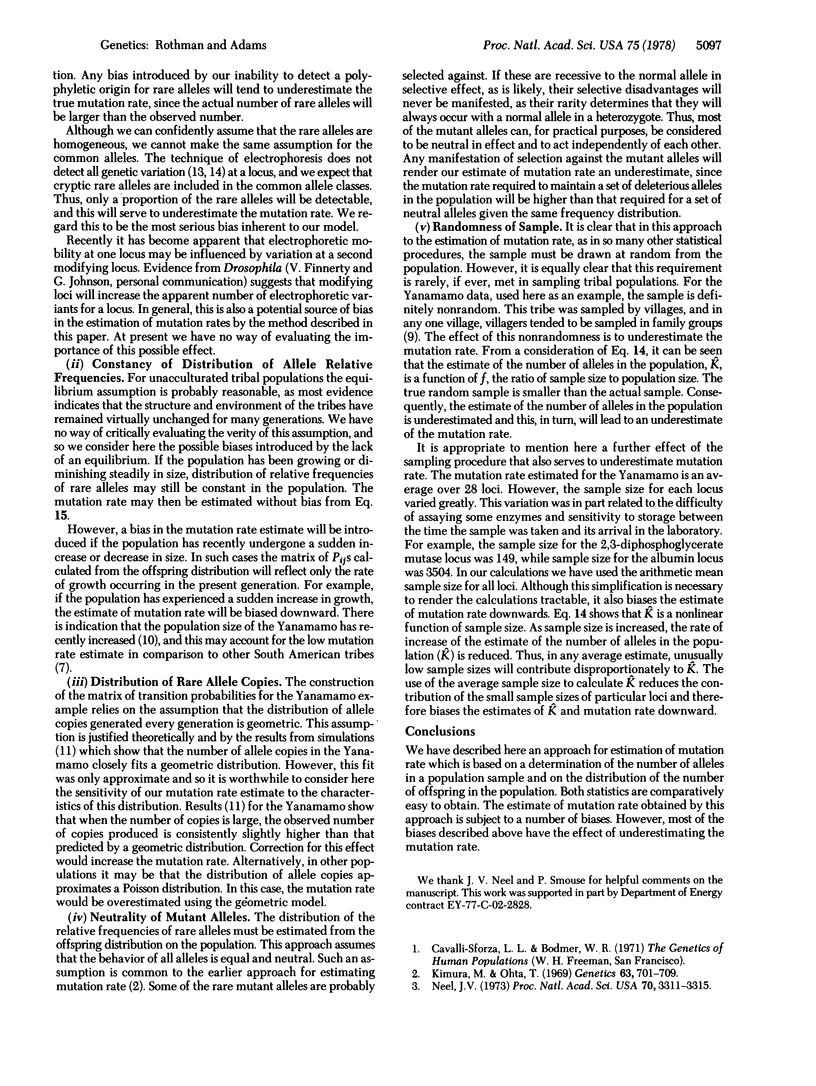
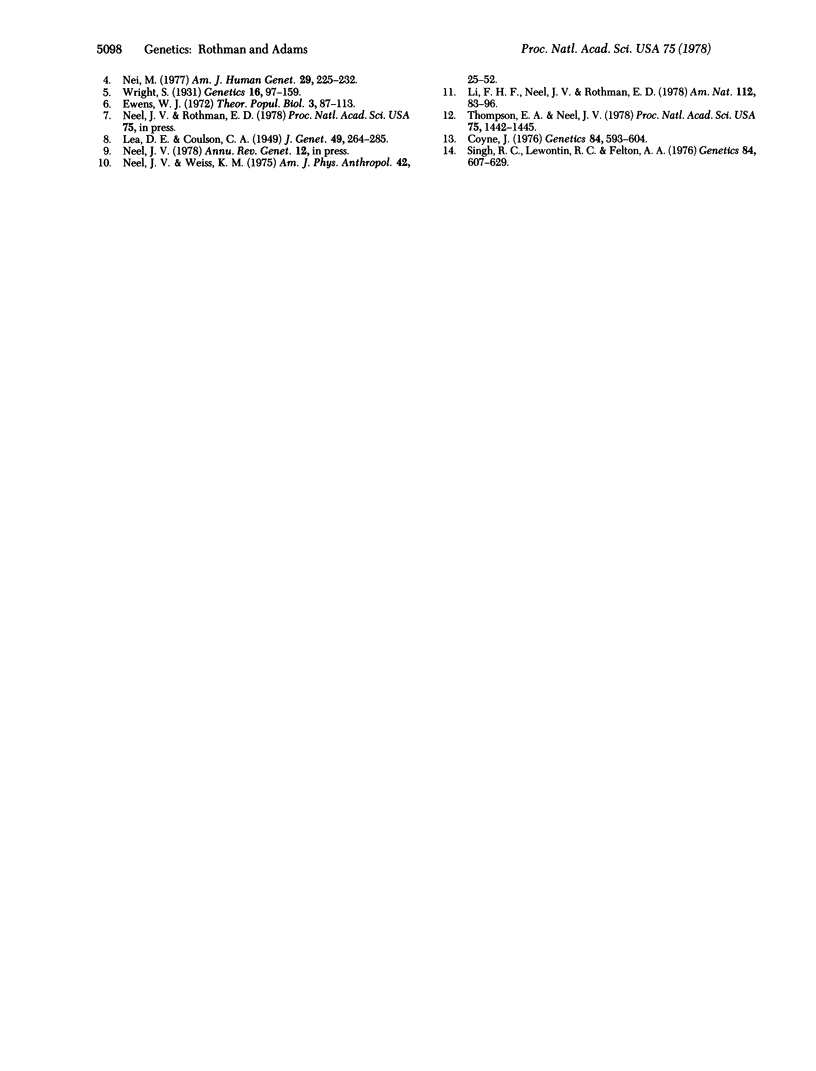
Selected References
These references are in PubMed. This may not be the complete list of references from this article.
- Coyne J. A. Lack of genic similarity between two sibling species of drosophila as revealed by varied techniques. Genetics. 1976 Nov;84(3):593–607. doi: 10.1093/genetics/84.3.593. [DOI] [PMC free article] [PubMed] [Google Scholar]
- Ewens W. J. The sampling theory of selectively neutral alleles. Theor Popul Biol. 1972 Mar;3(1):87–112. doi: 10.1016/0040-5809(72)90035-4. [DOI] [PubMed] [Google Scholar]
- Kimura M., Ota T. The average number of generations until extinction of an individual mutant gene in a finite population. Genetics. 1969 Nov;63(3):701–709. doi: 10.1093/genetics/63.3.701. [DOI] [PMC free article] [PubMed] [Google Scholar]
- Neel J. V. "Private" genetic variants and the frequency of mutation among South American Indians. Proc Natl Acad Sci U S A. 1973 Dec;70(12):3311–3315. doi: 10.1073/pnas.70.12.3311. [DOI] [PMC free article] [PubMed] [Google Scholar]
- Nei M. Estimation of mutation rate from rare protein variants. Am J Hum Genet. 1977 May;29(3):225–232. [PMC free article] [PubMed] [Google Scholar]
- Singh R. S., Lewontin R. C., Felton A. A. Genetic heterogeneity within electrophoretic "alleles" of xanthine dehydrogenase in Drosophila pseudoobscura. Genetics. 1976 Nov;84(3):609–629. doi: 10.1093/genetics/84.3.609. [DOI] [PMC free article] [PubMed] [Google Scholar]
- Thompson E. A., Neel J. V. Probability of founder effect in a tribal population. Proc Natl Acad Sci U S A. 1978 Mar;75(3):1442–1445. doi: 10.1073/pnas.75.3.1442. [DOI] [PMC free article] [PubMed] [Google Scholar]
- Wright S. Evolution in Mendelian Populations. Genetics. 1931 Mar;16(2):97–159. doi: 10.1093/genetics/16.2.97. [DOI] [PMC free article] [PubMed] [Google Scholar]


